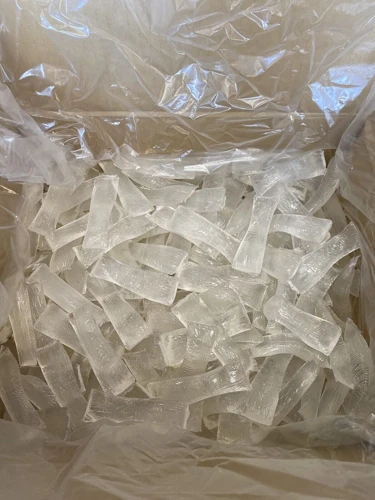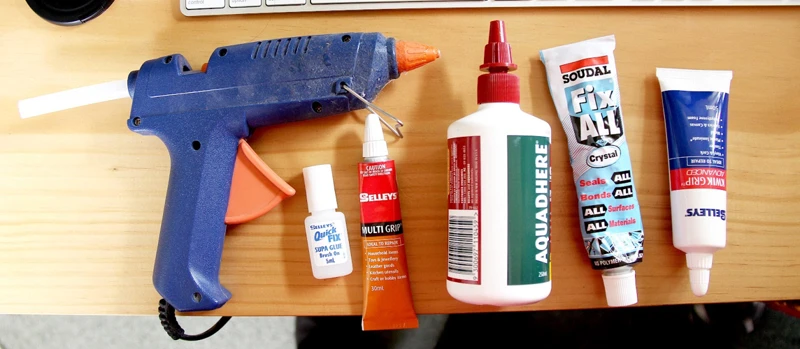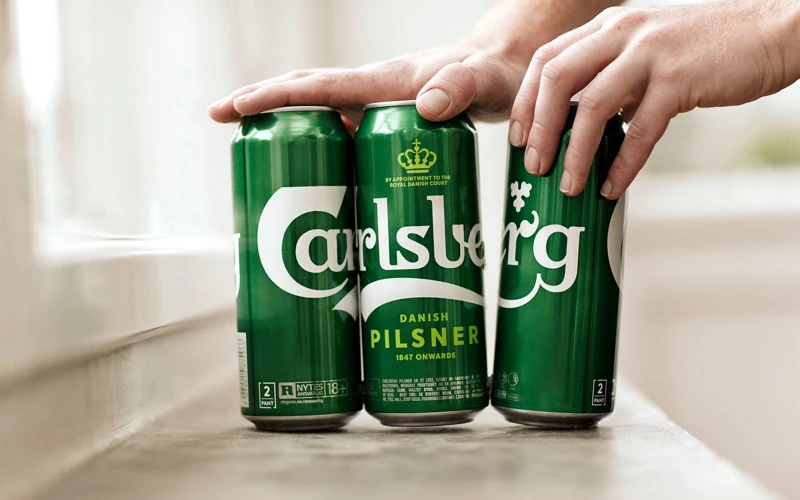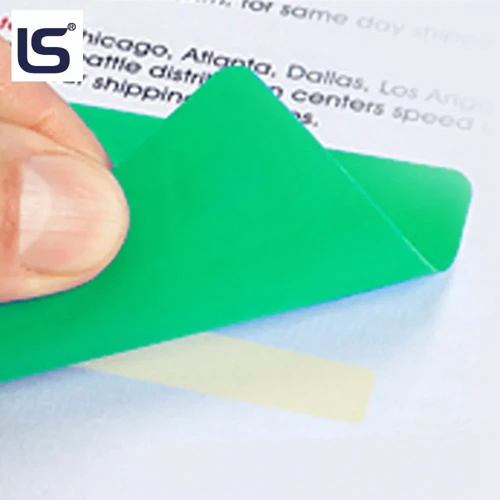Imagine you’re working on a project that requires lightweight materials to be affixed to various surfaces temporarily. You’ve tried conventional adhesives, but they leave behind residue or damage the surface when removed. What do you do? This is where fugitive glue comes in as a reliable solution. In this comprehensive guide, we will explore the definition, uses, properties, benefits, types, advantages, and applications of fugitive glue. We’ll also answer frequently asked questions that will help you decide if fugitive glue is the right choice for your project.
What is Fugitive Glue?
Discovering the wonders of adhesives can lead to the realization that there are various types of glue for a variety of purposes. One type is Fugitive Glue. But what is it, and what sets it apart from other adhesives? Read on to uncover the comprehensive guide to Fugitive Glue.
Definition of Fugitive Glue
Fugitive glue is a unique type of adhesive that is designed to not form a permanent bond with surfaces. Instead, it is formulated to have a temporary hold and can easily be removed without leaving any residue. This type of glue has a chemical composition that allows it to stick to a surface, but it loses its adhesive properties over time, making it an ideal solution for projects where a temporary bond is needed.
Unlike traditional adhesives, fugitive glue is not intended for a long-lasting bond and can be easily removed when the need arises.
Fugitive glue is commonly found in the form of a pressure-sensitive adhesive. This means that it only requires light pressure to bond to a surface. However, it is not recommended for use on heavy-duty materials or in environments with high humidity, as it may not perform well.
This type of glue is frequently used in the printing industry, where it is used to attach inserts, coupons, and other promotional materials to magazines, newspapers, and other types of printed materials. It is also used in the packaging industry, where it is used to hold inserts and product samples in place.
Fugitive glue is an excellent option for situations where a temporary bond is required. Its unique properties make it stand out from other adhesives, and it is a preferred option for many professionals due to its ease of use and versatility.
Uses of Fugitive Glue
Fugitive glue has various uses due to its unique properties. This adhesive is a non-permanent solution that allows for repositioning or removability of the glued item. Below are the uses of fugitive glue:
| Use | Description |
|---|---|
| Direct Mail Pieces | Fugitive glue is used in direct mail pieces for attaching promotional items, such as credit cards or membership cards. |
| Temporary Signage | When it comes to indoor signage that is only needed for a short period, fugitive glue is a popular choice. It can be quickly and easily removed without damaging the surface it was applied to. |
| Product Assembly | Fugitive glue is often used in product assembly lines as it facilitates quick and easy repositioning of parts before setting permanently. |
| Advertising Banners | Advertising banners are often hung temporarily during events or promotions. Fugitive glue is useful in these cases because it can hold the banner in place but be easily removed without leaving residue. |
| Magazine Inserts | Fugitive glue can be used for sticking CD/DVDs, samples, or perfume sachets to magazines and brochures. It can be easily removed without damaging the content. |
As we can see, fugitive glue is a versatile adhesive that finds a range of applications where non-permanent bonding is required. Whether it’s for a short-term promotion or product assembly, fugitive glue provides convenience and flexibility for various projects.
Properties of Fugitive Glue
Fugitive glue has some distinctive properties that set it apart from other types of adhesive. First of all, it is a low-tack adhesive that allows for easy removal and repositioning of the bonded items. This means that the glue is not permanent, and it can be peeled off without damaging the surfaces it was applied to.
Another property of fugitive glue is that it leaves no residue or staining when removed, which makes it ideal for use in applications where clean removal is important. It also doesn’t create wrinkles or bubbles when used for bonding paper or other thin materials, making it perfect for use in the printing industry.
It is worth noting that most fugitive adhesives are water-based, making them easy to clean up and less harmful to the environment than solvent-based alternatives. They are also typically non-toxic and safe for use around children.
In terms of strength, fugitive glue is not as strong as permanent adhesives, but it still provides a strong enough bond for certain applications. One of the benefits of this type of glue is that it can be used for bonding lightweight materials without adding extra weight or bulk.
The distinctive properties of fugitive glue, such as its low-tack, easy-to-remove nature, non-residue and non-staining properties, and water-based formula make it a versatile and advantageous choice for specific applications.
Benefits of Fugitive Glue
Fugitive glue has several benefits that make it a great option for specific applications. Below are some of the benefits of using fugitive glue:
- Easily Removable: One of the most significant benefits of fugitive glue is that it can be easily removed from surfaces without causing any damage. This is particularly useful when working with delicate or sensitive materials that need to be protected from damage.
- No Residue: Fugitive glue does not leave any residue when removed. This means that there is no need for additional clean-up after the glue is removed, making it a convenient option for many different applications.
- Temporary Hold: Fugitive glue is designed to provide a temporary hold, making it perfect for applications where a permanent bond is not needed. This also allows for easy repositioning or removal of the bonded items.
- Non-toxic: This type of glue is typically non-toxic, making it safe to use around children and pets.
- No Damage to Surface: Fugitive glue is gentle and does not damage surfaces when removed. This makes it a popular option for use in libraries, museums and other places where surfaces need to be protected from damage.
Whether you’re a professional crafter, an artist, or just looking for a safe, easy-to-use adhesive, fugitive glue may be the perfect option for you. With its many benefits, this type of glue is an excellent choice for a variety of applications.
Types of Fugitive Glue
Discovering the Different Forms of Fugitive Glue
Now that we have established what fugitive glue is, let’s take a closer look at the different versions available on the market. Understanding the different types of fugitive glue and their features can help you choose the best one for your specific application. So without further ado, let’s dive into the world of repositionable and removable fugitive glue.
Repositionable Fugitive Glue
Repositionable Fugitive Glue is a type of Fugitive Glue that is specially designed to be repositioned without leaving behind any residue when the bond is broken. This glue is perfect for temporary applications, such as holding paper or fabric in place during a cutting or sewing process. It is also ideal for applications where the positioning of the glued object needs to be adjusted during the creative process.
Features of Repositionable Fugitive Glue:
- It is easy to apply and dries clear
- It is non-permanent, which means it can be easily removed without damaging the surface of the object or leaving any residue
- It is pH neutral, making it safe to use on a variety of surfaces, including paper, cardstock, and photographs
- It has a low-tack bond, which means it can be easily repositioned without tearing or wrinkling the material
Repositionable Fugitive Glue is a versatile adhesive that can be used for a wide range of applications. It can be used in scrapbooking, card-making, and other paper crafts. It is also great for attaching fabric during sewing or quilting projects, as it will hold the fabric in place without leaving any residue behind.
One great thing about Repositionable Fugitive Glue is its versatility. It can be used on a variety of surfaces, including wood, metal, glass, and plastic. This makes it an excellent choice for temporary applications, such as creating window displays or signage for events.
When to use Repositionable Fugitive Glue:
- For temporary applications where the bond needs to be easily broken without any damage to the surface
- When working on creative projects that require repositioning of materials during the process
- When working on fragile or delicate materials that could be easily damaged by stronger adhesives
If you’re using Repositionable Fugitive Glue on paper or cardstock, it’s best to apply it sparingly to avoid wrinkling or warping the material. It’s also important to let the glue dry completely before attempting to reposition the material.
Repositionable Fugitive Glue is a highly versatile adhesive that can be used for a wide range of applications. Its ability to be easily repositioned without leaving behind any residue makes it an excellent choice for temporary applications or creative projects that require adjustment throughout the process. If you’re looking for a safe and effective adhesive, consider using Repositionable Fugitive Glue for your next project.
Removable fugitive Glue
Removable fugitive glue is another type of fugitive glue that is perfect for temporary bonding applications. This type of glue allows users to remove the bonded items easily without leaving any residue or damage. Removable fugitive glue is commonly used for paper products, such as mailers, envelopes, and flyers, where the glue is needed to hold the product together during transit, but then needs to be removed easily by the end user.
The table below showcases the key features of removable fugitive glue:
| Type of Adhesive | Removable fugitive glue |
|---|---|
| Appearance | White |
| Drying Time | Instant |
| Removability | Easy to remove without damaging surfaces or leaving residue |
| Water Resistance | Not waterproof |
| Uses | Paper products, temporary bonding applications |
One advantage of removable fugitive glue is that it allows for a secure bond that can be removed with ease. This type of glue is especially useful when used on delicate surfaces such as paper. Removable fugitive glue is also popular because of its instant drying time, which helps to speed up production processes.
It is important to note that removable fugitive glue is not waterproof, which means that it should not be used in applications where moisture or water may be present. Additionally, the bond strength of removable fugitive glue may weaken over time, especially if the items that are bonded are subject to frequent movement or handling.
Want to know more about glue drying times? Check out our article on how long glue takes to dry.
How does Fugitive Glue differ from other Adhesives?
Fugitive glue differs from other adhesives in several ways:
Firstly, Fugitive glue is unique because it is not a permanent adhesive. Its special attribute is that it is designed to be removed easily and without causing any damage to the surface. Most adhesives out there are permanent, resulting in the material being permanently stuck, which makes Fugitive Glue particularly useful for applications that require temporary bonding.
Secondly, unlike other adhesives, Fugitive Glue does not need to be applied to both surfaces to work effectively. Instead, it can be applied to just one surface, and the bond created is sufficient enough to hold the two pieces together. In contrast, other adhesives usually require the application of glue to both surfaces, and sometimes even some pressure to bind them together.
Lastly, Fugitive Glue is versatile enough to be applied on a range of materials, including paper, plastic, and fabric. It is especially useful for binding delicate materials due to its gentle adhesion and ease of removal. In contrast, some adhesives are only suitable for specific materials and may cause damage or leave residue when removed from other materials.
Fugitive glue offers unique advantages that distinguish it from other adhesives on the market. While it may not be practical for certain permanent bonding applications, its ease of use and gentle adhesion make it an ideal choice for temporary applications.
Advantages of using Fugitive Glue
Advantages of using Fugitive Glue
One of the primary benefits of Fugitive Glue is its versatility. It has a wide range of uses, including bonding paper, plastic, and other lightweight materials. Its repositionable and removable properties make it an excellent choice for applications such as temporary labels, notes, and posters. This type of glue can be used in many industries, such as packaging, printing, and crafts, due to its ease of use and clean removability.
Fugitive Glue also has an environmental advantage over other permanent adhesives. Its removable and repositionable properties make it ideal for use in situations where sustainability is critical, such as advertising posters or product packaging that requires ease of removal or repositioning.
Another advantage of using Fugitive Glue is its non-toxic nature, which makes it safe for use in different applications, including crafts and DIY projects. Unlike other adhesives that may contain harmful chemicals, Fugitive Glue is made from natural substances. It is an excellent choice for use in schools, homes, and other environments where safety is important.
Additionally, Fugitive Glue has a fast drying time and dries clear, making it ideal for use in applications such as book binding. It also has excellent removability without leaving any residue, ensuring that surfaces remain clean even after removal.
Fugitive Glue has numerous advantages over other adhesives. It is versatile, environmentally friendly, non-toxic, has a fast drying time, and dries clear. These qualities make it an ideal choice for a wide variety of applications, both professional and personal.
Applications of Fugitive Glue
Applications of Fugitive Glue
Fugitive glue has various applications in different industries such as printing, packaging, and labeling. One of the most common uses of fugitive glue is for product labels where the labels must be removed without leaving any residue. Fugitive glue is often used in the labeling of food packaging where the label needs to be removed for recycling or proper disposal.
Another application of fugitive glue is in the direct mail industry. Fugitive glue is used to affix postcards or samples to a letter without causing damage to either the sample or letter. It can easily be peeled off allowing for the sample to be used or the letter read without any issues.
Fugitive glue is also used in the printing industry for the production of magazines, catalogs, and other publications. In this application, fugitive glue is used to attach inserts, reply cards, and samples without damaging the publication. The glue is strong enough to hold the insert but can easily be removed without leaving any residue.
In the packaging industry, fugitive glue is used to seal packages for easy opening by the end consumer. The glue is strong enough to hold the package together during shipment, but it does not leave any residue when removed. This type of glue is also used for gift wrapping and other types of packaging that require easy opening.
Fugitive glue is ideal for applications where temporary adhesion is required. It allows for easy removal without leaving any residue or causing damage to the surface. Fugitive glue is a versatile adhesive that can be utilized in various industries, making it an excellent choice for many applications.
FAQs
Frequently Asked Questions about Fugitive Glue
To further understand fugitive glue, here are some frequently asked questions and their corresponding answers. You might stumble upon the answers to your inquiries, so make sure you read this part. If you have any other questions beyond what are presented, feel free to add them in the comments section.
What surfaces does Fugitive Glue work on?
Fugitive glue is a versatile adhesive that can be used on several surfaces. This adhesive is designed to be non-permanent, meaning that it creates a temporary bond that can easily be removed without leaving any residue or damage to the surface.
Here’s a list of surfaces that Fugitive Glue can work on:
| Surface | Details |
|---|---|
| Paper | Fugitive glue is commonly used in the paper industry for applications such as attaching flyers or postcards to magazines or catalogs. |
| Cardstock | Due to it’s temporary bond, fugitive glue is ideal for use in the production of greeting cards or invitations where a temporary bond is required prior to final assembly. |
| Foam Board | Fugitive glue is great for attaching temporary displays to foam board. This adhesive is strong enough to hold the display in place, but easily removable when it’s time to take it down. |
| Plastic | Some types of Fugitive Glue can be used on plastic surfaces, such as attaching promotional materials to plastic packaging or displays. |
It is important to note that Fugitive Glue may not be suitable for all surfaces so it’s important to test the adhesive on a small area first to ensure that it is compatible with the surface. Additionally, the bond strength of Fugitive Glue can be affected by factors such as temperature and humidity.
If you are looking for information on other types of glue, you may be interested in reading about how long PVA glue takes to dry on cardboard or if Elmer’s glue is waterproof when dry.
Is Fugitive Glue waterproof?
Fugitive glue is a type of adhesive known for its temporary bonding qualities, making it ideal for applications where a temporary hold is needed. One common question people have about fugitive glue is whether it is waterproof. The answer is no, fugitive glue is not waterproof. It is designed to be a temporary adhesive that allows for clean removal without leaving behind residue or damaging surfaces.
When using fugitive glue, it is important to keep in mind its temporary nature and avoid using it in situations where exposure to water or moisture is expected. Using fugitive glue on surfaces that will be exposed to water or moisture can result in the adhesive losing its grip, which can cause items to come loose or fall off.
To further understand the limitations of fugitive glue, let’s take a look at the following table that highlights its properties:
| PROPERTY | DETAILS |
|---|---|
| Waterproof | No |
| Duration of bond | Temporary |
| Residue after removal | No |
| Surface types | Porous and non-porous |
| Adhesion strength | Low to medium |
Understanding the properties of fugitive glue is important for determining its appropriate use. While it is not waterproof, fugitive glue has certain benefits that make it suitable for particular applications.
To learn more about different types of glue and their properties, check out our article on what Elmer’s school glue is made of, what Get Glue is, and what Decopatch glue is. If you’re wondering how long different types of glue take to dry, our articles on how long it takes for Elmer’s glue to dry and how long wood glue lasts can provide some helpful insights.
How long does Fugitive Glue last?
The longevity of fugitive glue depends upon its type and usage. Generally, repositionable fugitive glue can last up to 2 years or more, depending upon the environmental conditions. On the other hand, removable fugitive glue can also have a long lifespan, but it depends on the surface it’s applied to as well as any external factors.
Factors Affecting Fugitive Glue’s Longevity:
- The type of surface
- The quality of the glue
- Environmental conditions
If placed in a damp environment, the glue’s lifespan may be reduced. In contrast, a dry and cold environment can improve the lifespan of fugitive glue. However, it is vital to note that fugitive glue is not designed to be used as a permanent adhesive, so the lifespan is generally shorter than traditional adhesives.
Additionally:
Usually, the lifespan of fugitive glue is also determined by the manufacturer’s instructions, and if those instructions are followed closely, the glue is likely to last the intended amount of time. It’s important to follow the manufacturer’s recommendation to achieve the maximum lifespan.
Fugitive glue can provide a long-lasting and reliable hold depending on the type and context of use. However, its lifespan is generally shorter than traditional adhesives, since it is not designed for permanent bonding. For further information on glue types, you can refer to Who Owns It Glue or What is Elmer’s Glue in South Africa.
Conclusion
In conclusion, Fugitive Glue is a valuable adhesive that offers a unique set of properties and benefits. It provides a strong yet temporary bond that is ideal for applications that require repositioning or removal without causing damage to the attached surface. Fugitive Glue is available in various formulations and types that offer different levels of adhesive strength and removability. It is commonly used in printing, packaging, mailing, and labeling applications, as well as in crafts and hobbies.
One of the key advantages of Fugitive Glue is its versatility and ease of use. It can be applied using a range of methods including roll coating, spray coating, or manual application. It is also compatible with a wide range of substrates including paper, cardboard, plastic, and metal.
When using Fugitive Glue, it is important to follow the manufacturer’s instructions carefully to ensure optimal performance and avoid any issues such as poor adhesion or damage to the attached surface. It is also advisable to test the adhesive on a small area first, especially when using it on sensitive or expensive materials.
In summary, Fugitive Glue is an excellent choice for temporary bonding applications that require flexibility, repositionability, and clean removal. Its unique properties and benefits make it a valuable tool for professionals and hobbyists alike. Whether you need to attach product samples to promotional materials or create temporary displays, Fugitive Glue provides a reliable and efficient solution that can save you time, money, and frustration.
Frequently Asked Questions
What materials can be bonded with Fugitive Glue?
Fugitive glue can bond various materials such as paper, cardboard, fabrics, and plastics.
How does Fugitive Glue differ from permanent adhesive?
Fugitive glue is a temporary adhesive that allows for easy removal and repositioning while permanent adhesive forms a permanent bond.
Is Fugitive Glue safe for use in food packaging?
Yes, fugitive glue is safe for use in food packaging as it is FDA-compliant and non-toxic.
What is the maximum weight that Fugitive Glue can hold?
Fugitive glue is not designed to hold heavy objects, and thus its weight limit is relatively low compared to other adhesives. Generally, it can hold up to 5-10 pounds.
How can I remove Fugitive Glue residue from surfaces?
Fugitive glue residue can be easily removed using a damp cloth or a mild solvent such as rubbing alcohol or adhesive remover.
Can Fugitive Glue be used for outdoor applications?
Fugitive glue is not recommended for outdoor applications as it is not waterproof and may not withstand harsh weather conditions.
What is the drying time for Fugitive Glue?
The drying time for fugitive glue depends on the type and thickness of the glue, but generally, it dries quickly, within seconds to minutes.
Can Fugitive Glue be used on textured surfaces?
Yes, fugitive glue can be used on textured surfaces as it conforms to the surface and creates a strong bond.
What is the shelf life of Fugitive Glue?
The shelf life of fugitive glue varies depending on the brand and storage conditions but generally is around one year.
Are there any safety precautions when using Fugitive Glue?
As with any adhesive, it is recommended to use Fugitive Glue in a ventilated area and avoid prolonged skin contact. If irritable, wash with soap and cold water.




